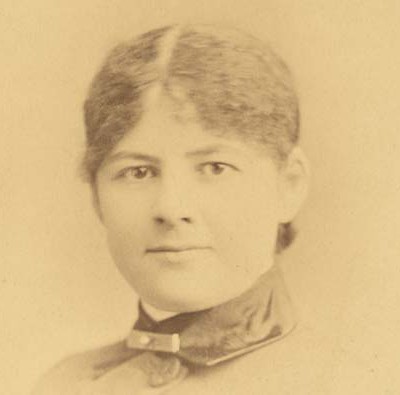
Louis Speyer (1807-1901) immigrated to the United States from Germany in the early 1840s. He peddled dry goods and “Yankee notions” through New England before settling in Hartford, Connecticut. In 1848, he married Celia Hubert (1817-1870). They had three children, Henry, James and Isaac, who died young. After Celia Speyer died, Louis Speyer married Bertha Lovingston (1843-1884). They had two sons, Isaac and David.
Henry Speyer (1849-1922) had moved to Wheeling, West Virginia, by 1870. He was a clerk in a millinery store before opening a millinery and furnishing goods business. James Speyer (1851-1884) joined his brother in 1874. Together, they started Speyer Brothers, then added a wholesale enterprise in 1881 and subsequently expanded their sales territory.
Henry Speyer married Fannie Freeman. They had five children, Celia, Blanche, Jean, Rita and Jessie. In 1882, James Speyer married Henrietta Crailsheimer. They had two children, Harry and Alexander. In 1889, after her husband and older son died of typhoid fever, Henrietta Speyer and younger son, Alexander, moved to old Allegheny City, where her family lived.
Alexander Speyer (1884-1959) graduated from local schools before attending Cornell University. He returned after a year to support his mother. Early on, he worked for the New York Life Insurance Company. He later founded the Moreland Coke & Coal Company. Toward the end of his career, Speyer primarily dealt in investments, holding seats on the Pittsburgh Stock Exchange and the New York Stock Exchange.
In 1913, Alexander Speyer married Tillie Sunstein at the Rittenhouse Hotel in East Liberty. They had five children, James, Alexander, Darthea, Moreland and Nora.
A. James Speyer (1913-1986) studied architecture at the Carnegie Institute of Technology, the Chelsea Polytechnic in London and the Sorbonne in Paris. In the late 1930s, he studied under architect Mies van der Rohe at the Armour Institute in Chicago, which greatly influenced his approach to modernist architecture. He served in the U.S. Army from 1941 to 1946, working in military intelligence in a chemical warfare division and as a historical monuments inspector. He started his architectural practice in Chicago in 1946 and taught at the Illinois Institute of Technology and the Athens Polytechnion. He was the first curator of 20th Century Art at the Art Institute of Chicago. Among his notable works are the Ben Rose house in Chicago, a compound of homes on his property in Greece, and two Pittsburgh residences: the Jerome Apt house on Woodland Road and a house for his mother at the corner of Wightman and Northumberland Streets. He was also known for designing museum exhibits.
Alexander Speyer Jr. (1915-2010) attended local schools and graduated from the Carnegie Institute of Technology with a degree in mining engineering. He worked as a draftsman and engineer for the Terminal Coal Company in the 1930s and later sat with his father on the New York Stock Exchange. After World War II, he used land acquired from the Pittsburgh Coal Company to start the North Star Coal Company, which strip mined in Western Pennsylvania before expanding into the equipment and transportation sectors. “Alex was the kind of investor who carefully scrutinized every investment he made for himself or recommended to others,” the lawyer Edwin J. Strassburger told the Pittsburgh Tribune-Review after Speyer died. “He was the kind of investor who would go to the site of a recommended investment. Alex inherited his sense of service and prudent decision-making from his father and his forefathers. And this is one of the reasons that four generations of Strassburger attorneys have represented and continue to represent five generations of Speyers.” For many years, Speyer had a regular poker game with Allen Berkman, Irving Gruber and Louis Blum.
In 1940, Alexander Speyer Jr. married Jean Levinson (1914-1977). They had four children, Alexander, James, Timothy and Deborah. After Jean Speyer died, Alexander Speyer married Irma Szakacs Black (1932-2001) of Coraopolis, Pa.
Darthea Speyer (1919-2014) began collecting art as a teenager and studied art history at the Institute of Fine Arts at New York University in the 1940s. As a cultural attaché in Paris for the United States Information Service from 1950 to 1965, she coordinated nearly 150 exhibitions and introduced many American artists to the European market.
In 1968, she opened the Galerie Darthea Speyer in Paris in a building designed by her older brother James. She managed the influential art gallery until she retired in 2009.